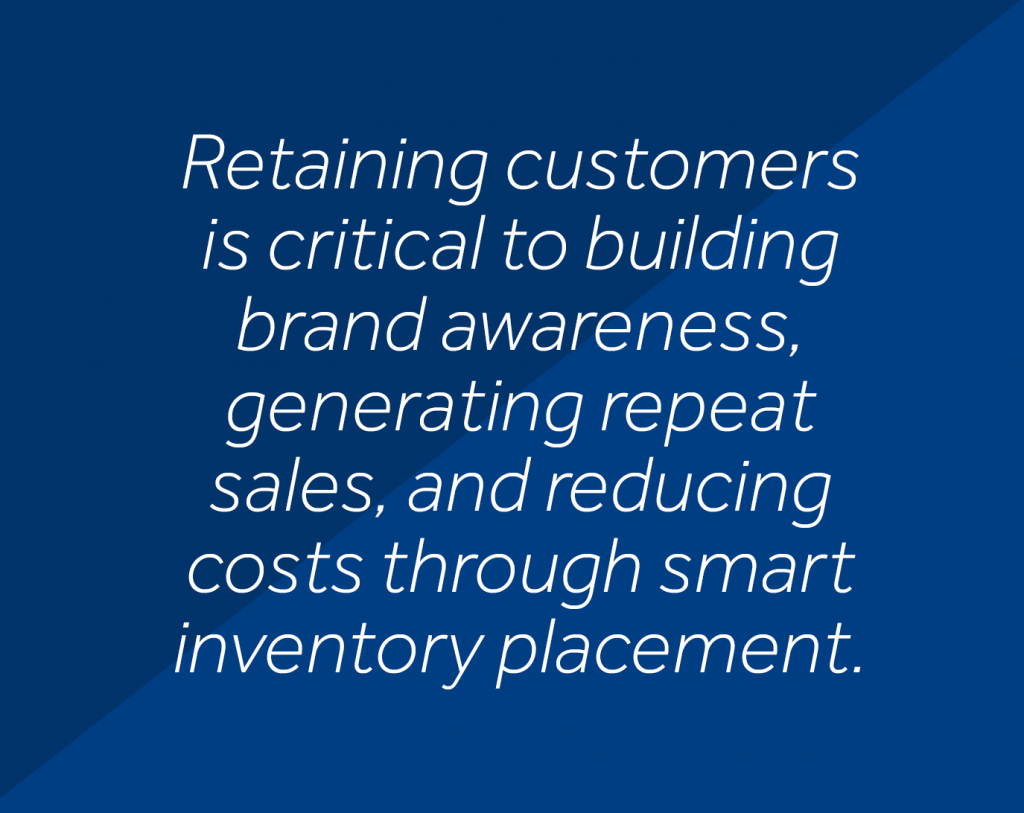5 Ways Rithum Can Help Brands and Sellers Plan and Prepare to Execute Successful Direct-to-Consumer Strategies in 2020

 1. Mine your sales data to inform your product selection.
1. Mine your sales data to inform your product selection.
Identify your top sellers from the previous year and gain an understanding of what worked to drive conversion. Were these top sellers because of a well-executed ad campaign? Did they offer a deal or coupon that made a difference? Identify the conversion drivers that worked and look to replicate that experience in the new year.
2. Capitalize on data to optimize inventory placement.
Retaining customers is critical to building brand awareness, generating repeat sales, and reducing costs through smart inventory placement. Use your customer data to find out who is buying your products. This data can help optimize your inventory placement by staging high-velocity selection in warehouses closest to the population centers that drive your sales. If you are considering warehouse expansion, your most recent order data is a great way to ensure you expand into the markets that would benefit the most.
3. Review your ad and deal campaign performance to optimize future campaigns.
Your bid strategy is critical to making the most of limited marketing budgets. An effective strategy takes into account the following factors: timeline for building impressions in advance of conversion opportunities, understanding of conversion rate trends throughout the year, and historical competitor bidding strategy, among others. We can help you build and execute a bidding strategy tailored to your marketing goals while also helping you spot opportunities to modify that strategy and increase impressions.
 4. Negotiate your carrier rates.
4. Negotiate your carrier rates.
The cost of shipping is one of the biggest expenses incurred by ecommerce sellers. Even though you are not fulfilling orders at the rate of Amazon, carriers are very keen to retain existing customers and win business from their competitors. Negotiate with your carrier to keep shipping rates manageable so you can keep up with your delivery promises.
Consider operating with regional carriers in high population areas. When presented with the opportunity to test new carriers, use their introductory rates for quick wins. Ship with Amazon (aka SWA) has aggressive growth plans for 2020 and given their size, it makes sense to gain an understanding of how you might use them as part of your overall carrier portfolio.
Did the performance of your post office impact your seller ratings? If so, consider switching offices. Performance among post offices can vary widely, so testing other locations close to your fulfillment center may improve your on-time shipping and/or on-time delivery metrics with very little impact to your processes and costs.
5. Expand during the quiet times.
The start of the year typically generates much lighter order volume. Use this time to grow with reduced risk. The impact of inventory movements, changes to pricing methodology, or wide-scale listing changes can all be tested with less impact and risk as compared to other higher volume selling times of the year.
Contact us to learn how Rithum can help plan your 2020 strategy.
 Back to all
Back to all








